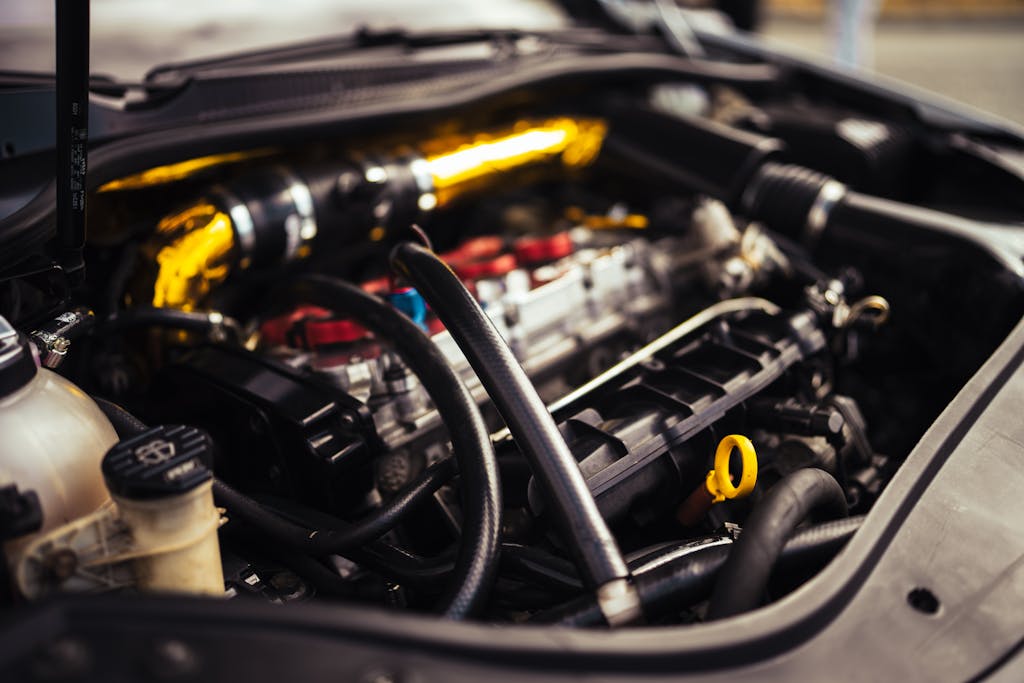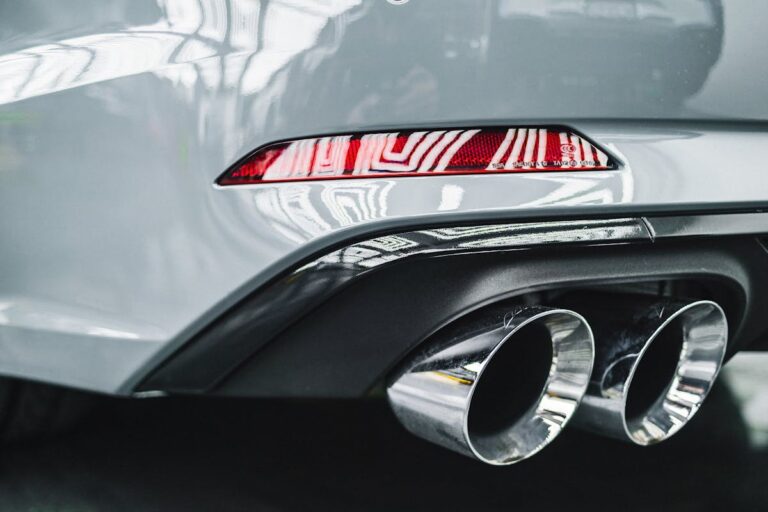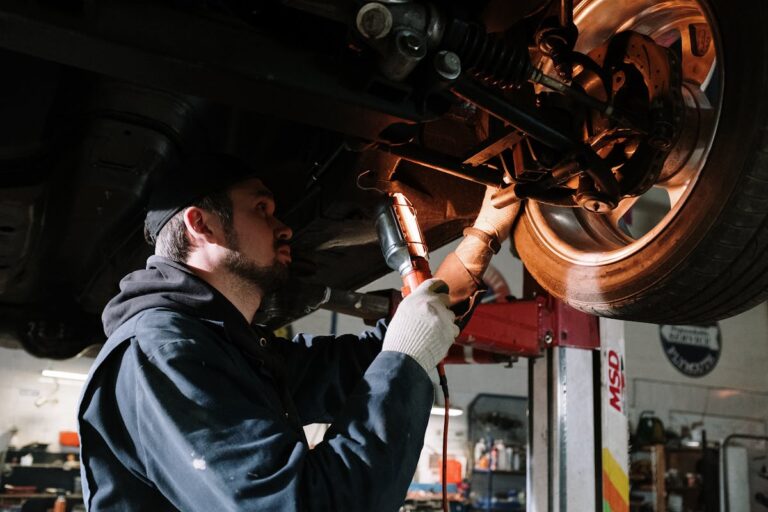Common Symptoms of a Bad Radiator You Shouldn’t Ignore
In the domain of vehicle maintenance, the radiator plays a vital role in regulating engine temperature. A malfunctioning radiator can manifest through various symptoms—unusual temperature gauge readings, coolant leaks, or even engine overheating. Ignoring these signs could lead to extensive engine damage and costly repairs. Identifying these issues early on is essential for maintaining engine efficiency. Discovering what these symptoms entail and how they impact your vehicle’s performance is imperative.
Unusual Temperature Gauge Readings
When examining the symptoms of a faulty radiator, how does one interpret unusual temperature gauge readings? A vehicle’s temperature gauge is a critical diagnostic tool, providing insights into the engine’s thermal health. Fluctuating temperature readings often indicate an underlying issue with the radiator’s performance. If the temperature gauge displays inconsistent readings, it may suggest a compromised heat exchange process. This inconsistency is typically caused by blockages, corrosion, or diminished radiator efficiency. Technicians should employ a systematic approach: inspect for obstructions within the radiator fins, assess the condition of the radiator cap, and verify the operation of the thermostat. Precise gauge readings are essential, as they enable effective evaluation of the radiator’s condition and guarantee proper engine cooling functionality, preventing potential overheating.
Coolant Leaks Under the Vehicle
Detecting coolant leaks under a vehicle is a critical aspect of diagnosing radiator issues. Observing a pool of liquid beneath the car can signify potential radiator malfunction. Discolored coolant, often green or orange, suggests contamination or degradation. A systematic inspection can reveal:
- Radiator Seals Failure: Compromised seals can lead to coolant escaping, necessitating immediate attention.
- Hose Connections: Loose or deteriorated hose connections might allow coolant to seep out.
- Reservoir Cap: A faulty cap can result in pressure loss, causing leaks.
- Radiator Core Damage: Physical damage to the radiator core can create leak points.
Swift identification and resolution are essential to prevent engine overheating and extensive damage. Each component requires careful examination to guarantee a thorough assessment of the cooling system’s integrity.
Sludge or Rust in the Radiator
The presence of sludge or rust in a radiator often indicates issues such as coolant contamination or a reaction between metal components and the coolant. This accumulation can lead to restricted coolant flow, resulting in engine overheating and potential damage. Identifying and addressing these causes promptly is essential for maintaining ideal radiator function and preventing costly repairs.
Causes of Radiator Sludge
Radiator sludge, often characterized by a thick, muddy substance or rust within the cooling system, can result from several underlying issues. Primarily, this sludge forms due to:
- Mineral Deposits in Coolant: Hard water in the cooling system can lead to mineral accumulation, disrupting fluid flow.
- Chemical Composition Changes: Over time, coolant can degrade chemically, altering its protective properties and leading to sludge.
- Incompatible Coolant Mixtures: Mixing different coolant types can cause chemical reactions, resulting in gel-like formations.
- Corrosion Inside the System: Metal components within the radiator can corrode, contributing rust and particles to the fluid.
Identifying these causes allows for targeted maintenance efforts, mitigating the risk of radiator failure and ensuring ideal vehicle performance.
Effects of Rust Build-up
When rust accumulates within a radiator, it can drastically impair the efficiency of the cooling system, leading to various operational challenges. Corrosion buildup acts as an insulator, inhibiting the heat exchange process required to maintain essential engine temperatures. Additionally, rust particles mingle with coolant, forming sludge that obstructs fluid flow, causing potential overheating. Mineral deposits compound this issue by narrowing passageways, further restricting coolant circulation. This combination of sludge and mineral deposits can lead to engine performance degradation over time. If left unchecked, radiator rust can extend to other components, including the water pump and thermostat, increasing repair costs. Regular inspection and maintenance, including flushing the cooling system, are indispensable to mitigate rust-related complications and guarantee reliable vehicle operation.
Overheating Engine
An overheating engine is often a critical indicator of a malfunctioning radiator, potentially leading to severe engine damage if not promptly addressed. This issue is commonly attributed to coolant temperature fluctuations, which impede the radiator’s ability to dissipate heat effectively. Consequently, engine performance degradation may occur, as the powertrain struggles to maintain ideal operating conditions. To identify this problem, consider the following signs:
- Temperature Gauge Spike: Sudden increases in the temperature gauge signal coolant system inefficiencies.
- Steam Emissions: White steam from the engine bay indicates excessive heat buildup.
- Unusual Noises: Gurgling or knocking sounds may denote coolant boiling or air trapped in the system.
- Poor Fuel Economy: When the engine overheats, it can lead to reduced fuel efficiency and increased emissions.
Low Coolant Levels
Low coolant levels in a vehicle’s radiator can be indicative of underlying issues such as coolant leakage or a malfunctioning radiator system. Technicians should inspect for signs of coolant leakage, including puddles under the vehicle or a sweet smell from the engine bay, which can necessitate frequent coolant top-ups. Addressing these symptoms promptly is essential to prevent engine overheating and maintain ideal radiator performance.
Coolant Leakage Signs
Detecting coolant leakage is fundamental for preventing engine overheating and potential damage. One common indicator is discolored coolant, which may appear rusty or brownish, suggesting contamination or leakage. Additionally, individuals might notice coolant stains on the driveway, a clear sign that the system is compromised. A thorough inspection should be conducted to identify the root cause of the leakage. To systematically diagnose coolant leaks, consider these steps:
- Visual Inspection: Check hoses, clamps, and the radiator for any visible cracks or deteriorations.
- Coolant Reservoir: Examine the coolant reservoir for unusual fluid levels or discoloration.
- Pressure Test: Perform a pressure test to identify leaks within the cooling system.
- Under-vehicle Check: Observe the ground beneath the vehicle for any fresh coolant stains.
Prompt attention to these signs can avert costly repairs.
Frequent Top-Up Needs
Another critical issue often accompanying coolant leakage is the frequent need to top up the coolant levels. This may indicate an underlying problem with the radiator or associated components. A vehicle requiring constant coolant replenishment often exhibits signs of discolored coolant. This discoloration can result from contaminants within the system, suggesting internal corrosion or a breach allowing foreign particles. In addition, drivers might observe inconsistent temperature fluctuations on the dashboard gauge. Such fluctuations are symptomatic of an ineffective cooling system, jeopardizing engine performance and longevity. To resolve this, a thorough inspection is essential to identify potential leaks, faulty radiator caps, or compromised hoses. Addressing these issues promptly can prevent more extensive damage and guarantee optimal engine operation.
Steam or Smoke From the Hood
A frequent indicator of a malfunctioning radiator is the presence of steam or smoke emanating from under the vehicle’s hood. This phenomenon often signals radiator overheating concerns, which can lead to significant engine damage if left unaddressed. When evaluating this issue, attention should be paid to unusual steam patterns, which might reveal the severity of the problem.
Key factors to ponder include:
- Temperature Gauge Readings: Consistently high readings suggest potential overheating.
- Coolant Leakage: Look for visible coolant on the ground or around the engine.
- Radiator Cap Issues: A faulty cap may compromise pressure regulation, exacerbating steam release.
- Damaged Hoses: Cracked or worn hoses can lead to coolant loss and overheating.
Identifying these elements can assist in diagnosing and remedying radiator malfunctions effectively.
Frequent Need to Refill Coolant
When a vehicle frequently requires coolant refills, it often indicates underlying issues within the cooling system that need immediate attention. Excessive coolant consumption may arise from leaks in the radiator or associated components, such as hoses and gaskets, leading to premature coolant depletion. To diagnose, technicians should conduct thorough inspections for visible leaks, pressure test the radiator, and examine for signs of rust or corrosion, which can compromise system integrity. Additionally, a malfunctioning radiator cap can result in insufficient pressure, causing coolant to escape. The thermostat and water pump should also be evaluated, as failures in these areas can exacerbate coolant loss. Addressing these issues promptly is essential to prevent engine overheating and maintain ideal vehicle performance.
Damaged or Clogged Radiator Fins
In the domain of automotive cooling systems, damaged or clogged radiator fins can severely impair heat dissipation, leading to engine overheating. Radiator fins are indispensable for maintaining ideal engine temperature; however, various issues can arise:
- Restricted Air Flow: Debris accumulation or physical damage can obstruct air passage through the fins, reducing cooling efficiency.
- Fin Corrosion: Environmental factors such as moisture and road salts can cause corrosion, weakening the fins and further restricting heat exchange.
- Bent Fins: Physical impacts can deform the fins, disrupting airflow and compromising their ability to transfer heat effectively.
- Clogged Fins: Accumulation of dirt, leaves, and insects can block the fins, necessitating thorough cleaning to restore proper functionality.
Timely identification and resolution of these issues are essential for maintaining efficient engine cooling.
Strange Engine Noises or Smells
Despite the complexities of a vehicle’s cooling system, certain auditory and olfactory signals can provide critical insights into its condition, particularly when strange engine noises or unusual smells emanate from under the hood. A bubbling engine noise often indicates trapped air pockets in the radiator, usually due to low coolant levels or leaks. This symptom can precede overheating sounds, such as hissing or gurgling, suggesting coolant is boiling instead of circulating effectively. An unusual smell, such as a sweet, burnt odor, typically signals a coolant leak, which can cause the engine to overheat. Immediate diagnostic attention is warranted to identify the malfunctioning components within the cooling system, ensuring the vehicle maintains ideal performance and preventing further damage to the engine.
Frequently Asked Questions
How Does a Malfunctioning Radiator Impact Fuel Efficiency?
A malfunctioning radiator adversely affects fuel efficiency by causing decreased heat transfer, leading to engine overheating. This overheating results in reduced engine lubrication, increasing friction and energy loss, ultimately requiring more fuel to maintain ideal engine performance.
Can a Bad Radiator Affect the Car’s Air Conditioning System?
Yes, a bad radiator can affect the car’s air conditioning system. Coolant flow problems lead to reduced cooling capacity, causing the engine to overheat and subsequently impacting the air conditioning’s efficiency due to increased operational strain.
Is It Safe to Drive With a Faulty Radiator?
Driving with a faulty radiator is unsafe due to overheating risks, which can lead to potential engine damage. Addressing radiator issues promptly guarantees efficient thermal management, preventing costly repairs and maintaining vehicle performance and reliability.
How Often Should a Radiator Be Flushed or Serviced?
A radiator should be flushed and serviced every 30,000 miles or per manufacturer recommendations. Proper coolant maintenance is pivotal, and adhering to a regular radiator inspection schedule helps prevent overheating and prolongs engine lifespan.
What Role Does the Thermostat Play in Radiator Function?
The thermostat plays a vital role in radiator function by managing thermostat temperature regulation, ensuring ideal radiator coolant circulation. It opens and closes to maintain appropriate engine temperature, thereby preventing overheating and ensuring efficient engine performance.


